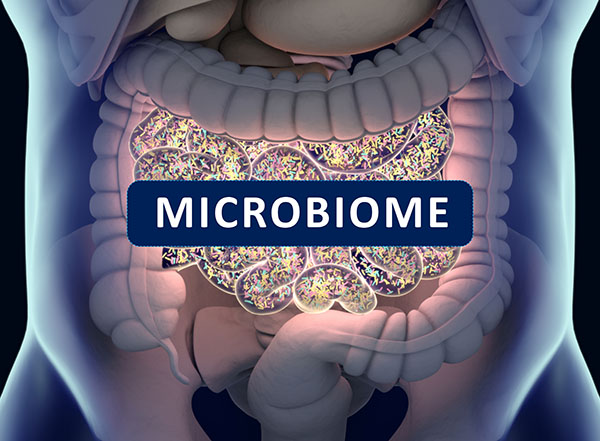
Carsten Carlberg, a professor at the University of Eastern Finland, and Alberto Munoz, a professor at the Autonomous University of Madrid, discussed the molecular basis of vitamin D signaling and its role in cancer prevention in a newly published review in Seminars in Cancer Biology.
Vitamin D: production, processing and transcription-related functions
Vitamin D is produced in the skin via the conversion of a direct cholesterol precursor called 7-dehydrocholesterol. This event is only triggered when the skin is exposed to UVB from the sun. Vitamin D can also be obtained from food sources, such as fatty fish, egg yolks, mushrooms and fortified food products. But because dietary options are limited, moderate sun exposure remains to be the best source of vitamin D.
Food-derived vitamin D is chemically inactive and needs to undergo two processes for activation. The first process occurs in the liver, where inert vitamin D is converted into 25-hydroxyvitamin D3, also known as calcidiol. As the most stable form of vitamin D, this metabolite is used as a biomarker for determining a person’s vitamin D status.
From the liver, calcidiol is processed either by the kidneys, epithelial cells (i.e., cells that line the surface of organs) or immune cells to produce the physiologically active 1,25-dihydroxyvitamin D. Also called calcitriol, this active form of vitamin D acts as the high-affinity ligand -- a molecule that binds to a specific protein -- of the transcription factor, vitamin D receptor (VDR). Transcription factors are necessary for the conversion of DNA into RNA, which is the first step in protein synthesis.
Many types of cells contain VDRs in their cytoplasms. Vitamin D binding to a VDR enables the latter to modulate genes that encode for proteins necessary for the regulation of cell proliferation, differentiation and apoptosis (cell death). The vitamin D-VDR complex also influences signaling pathways that affect the functions of important enzymes and ion channels.
Vitamin D signaling and cancer prevention
Over the past decades, research has uncovered new information about how cancer cells develop, proliferate, metastasize and even resist chemotherapeutic drugs. One of the most intriguing findings about cancer is the association between vitamin D -- a hormone produced by the body in response to ultraviolet (UV)B rays -- and cancer development. While excessive exposure to UVB is said to be the cause of most skin cancers, ironically, the hormone whose production it triggers appears to be the key to preventing cancer.
The authors reported: “Rapidly growing immune cells and cancer cells both use the same pathways and genes for controlling their proliferation, differentiation and apoptosis.” Cancer cells, in particular, are notorious for their ability to proliferate uncontrollably, which allows them to form invasive tumors. (Related: Vitamin C vs. the Big C: Experts claim vitamin C has anti-cancer properties.)
But because these cells rely on the same vitamin D-regulated pathways as immune cells, scientists have latched onto the idea that cancer cell growth can be prevented with adequate vitamin D signaling. This theory is supported by several studies that link low vitamin D status with a higher risk of certain cancers and poor cancer prognosis.
The strongest evidence of the anti-cancer effect of vitamin D is presented by studies involving colorectal cancer and blood cancers like leukemias and lymphomas. During hematopoiesis when blood cell and plasma components are produced, precursor cells “differentiate,” or transform from one cell type to the other. Vitamin D is a crucial component in this process, as well as in the differentiation of adult stem cells in rapidly regenerating tissues like the colon.
But when vitamin D levels are low, VDR functioning becomes suboptimal. Calcitriol binding is required for certain VDRs to control gene transcription in healthy cells and even in cancer cells. Without sufficient vitamin D, the expression of differentiation-related genes becomes dysregulated, increasing the risk of otherwise healthy cells not differentiating fully, which results in them becoming cancer cells that continue to grow uncontrollably.
“Ligand-activated VDR binds to more than 10,000 loci within the human genome and affects the transcription of some 1,000 target genes in a large proportion of human tissues and cell types. These persistent VDR binding sites serve as primary contact points for the communication of vitamin D with the human genome, i.e., they act as “hotspots” of vitamin D signaling,” Carlberg and Munoz explained in their review.
The authors also said that the results of multiple studies point to maintaining a good vitamin D status as an excellent preventive measure against cancer. However, there appears to be a need to personalize vitamin D supplementation (for those with low vitamin D-diets) as people’s responsiveness to it varies. While some recipients readily benefit from low doses of vitamin D, others need higher doses -- the safest being 4,000 international units (IU) or 100 micrograms -- for cancer prevention.
For instance, in a large randomized controlled trial involving 25,871 participants, researchers found that supplementation with 2,000 IU of vitamin D per day for five years can reduce cancer incidence or mortality in healthy participants. However, this only became evident after a secondary analysis showed that the results of such studies may be skewed if the majority of the participants are low responders to vitamin D supplementation.
Another study involving Finnish cohorts also reported similar findings when 25 percent of the sample population was found to be low responders. Nevertheless, for those who had low vitamin D status and responded well to low-dose supplementation, researchers found significant reductions in their risk of cancer following improved vitamin D intake, demonstrating the protective effects of vitamin D against the deadly disease.
Sources include:
Please contact us for more information.























